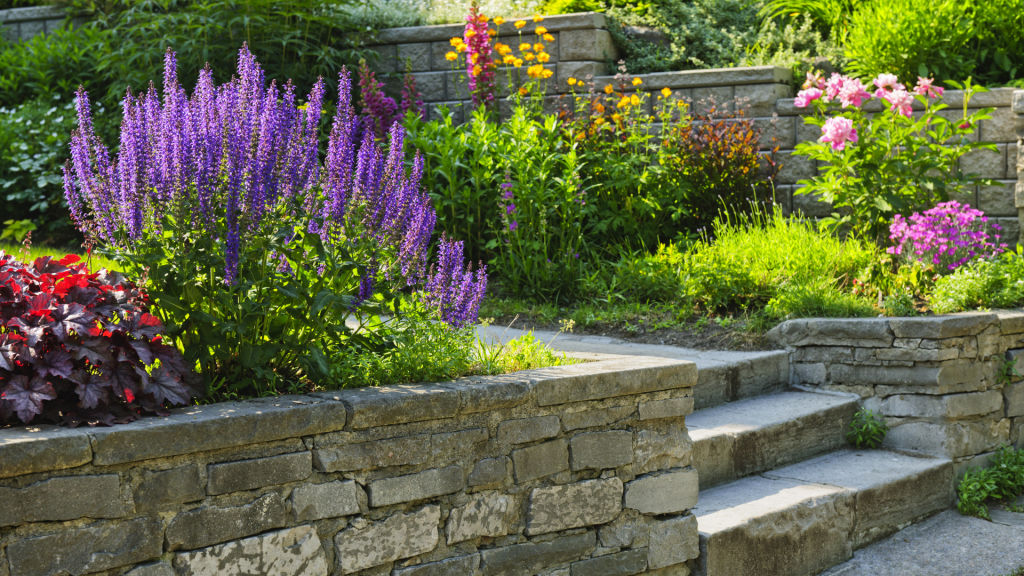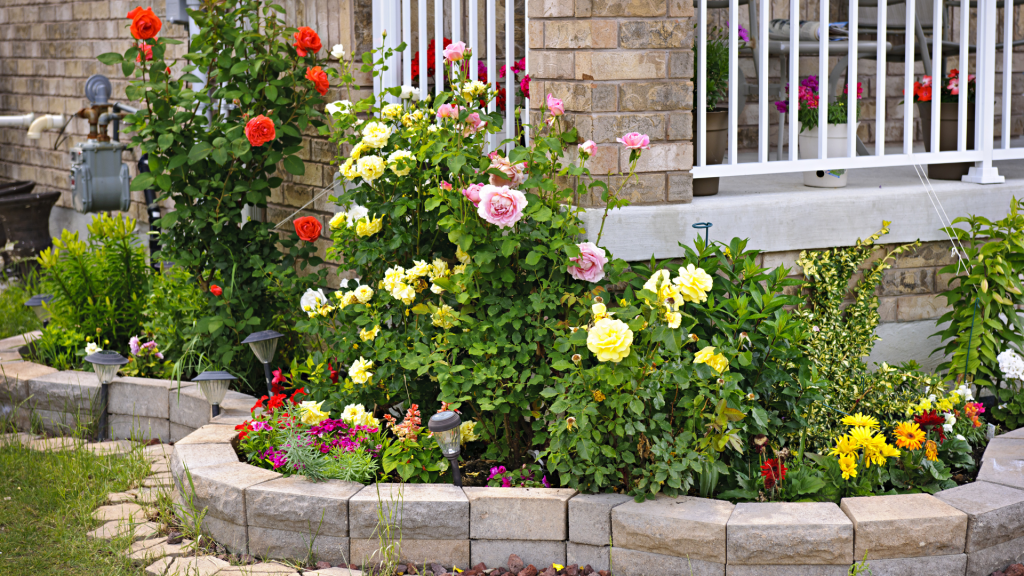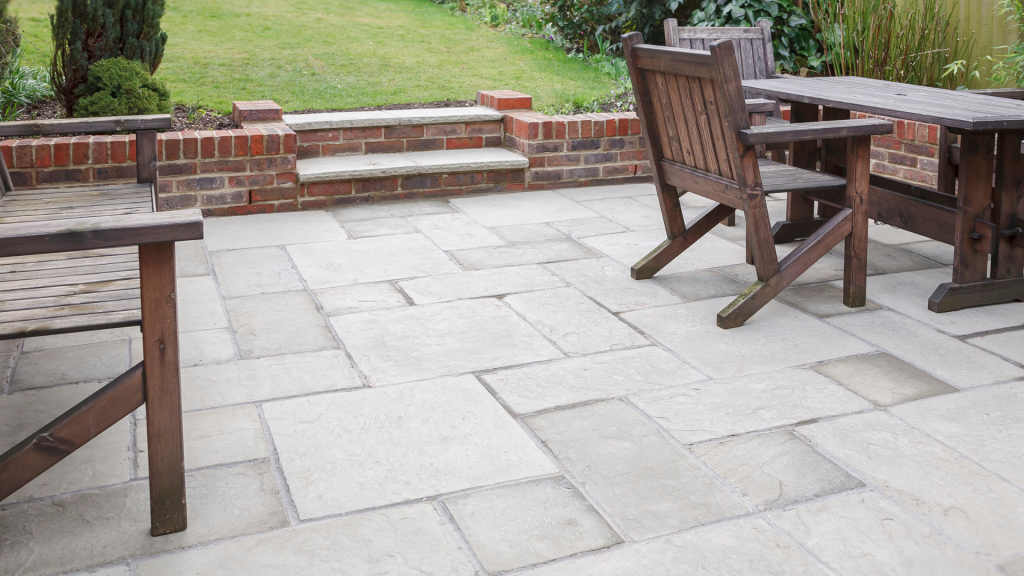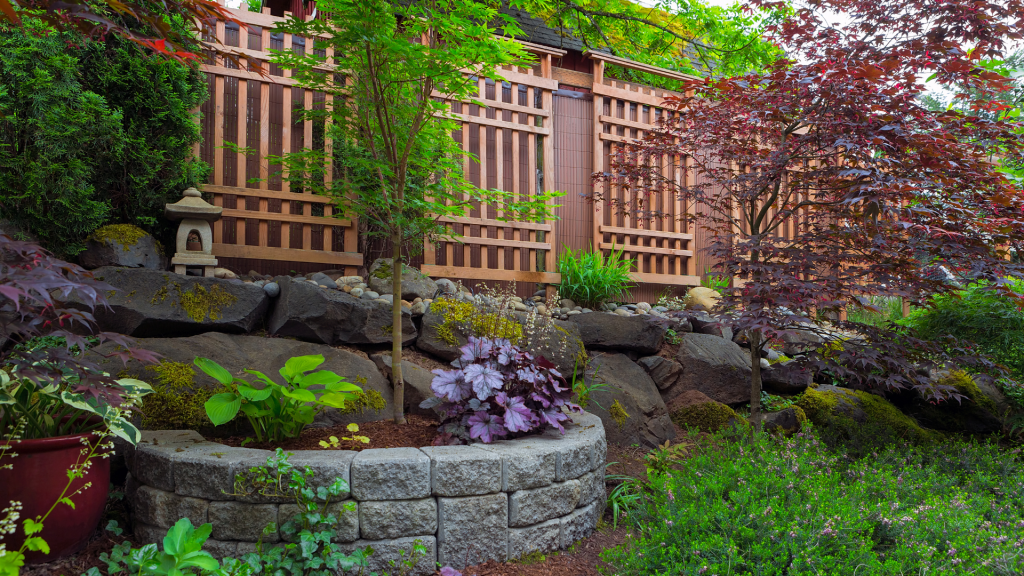Gardens serve as a bridge between people and nature. The various elements in a garden, including the stones, possess unique energy. However, stones hold a particularly significant role. What is the history behind their use, and how and why are they utilised?

What history do stones have in the garden?
Ancient civilizations have used stones in the garden; their use as a decorative and functional element in gardens has a long history that goes back thousands of years. Stone features have been used in many cultures and eras for various purposes, both aesthetically and practically. In the Japanese garden tradition (Zen gardens), stones were often used to create small mountains, waterfalls and other natural features on a reduced scale. In this way, the stone symbolized stability, durability and tranquillity. In ancient Greece and Rome, statues and columns often decorated gardens, and thus, they expressed aesthetic taste and artistic sensibility. Stones found their use in the garden during the Renaissance, Baroque and Rococo periods, and they still serve us today.

How can you use stones in the garden?
Stones in the garden can be used in various ways as decorative and functional elements. Stone is a very versatile material in garden design, and its use depends on your preferences, garden style and specific needs. In addition to the traditional elements listed below, stone fountains, statues, bowls, and other containers can be used for many other stone decorations.
- Stone paths and walkways: Stone paths and walkways are a traditional way of using stone in the garden. They can be laid out in different shapes and patterns and create a comfortable passage through the garden, be it regular paths or walkways leading to other garden parts.
- Stone walls and terraces: Stone walls can serve as supporting elements that enable a terraced garden arrangement on uneven terrain. These walls may have a practical purpose, but at the same time, they add exciting texture and structure to the garden.
- Stone flower beds: You can use stone walls to create beds for flowers and plants. These walls can serve as a supporting structure and, at the same time, create an aesthetic element.
- Stone seating areas and fireplaces: Stone benches and fire pits can be an ideal place to relax and gather in the garden. The stone material is resistant and durable, which ensures long-term functionality.

What types of stones do We see in the gardens?
Several different types of stone are used in gardens, each with its characteristics, colours and textures. The choice of stone depends on the specific garden style, aesthetic preferences and functional requirements. Some commonly used types of stone in garden design are limestone, sandstone, marble, slate and granite. It is essential to choose a stone that matches the climatic conditions of your area so that it is durable and weather-resistant. Furthermore, it should harmonise with the overall style of the garden and meet aesthetic requirements.

How to clean and maintenance garden stones?
Proper care of stones in the garden can ensure that they remain beautiful and durable. If you decide to implement stones in your garden’s space, it is also essential to consider their long-term care and maintenance. Stones are susceptible to the adverse effects of weather, erosion and drying, which can, over time, impair their original appearance and functionality.
Caring for stone elements in the garden includes:
- Their cleaning of dust and dirt
- Removal of algae
- Possible of the surface with protective coatings
Securing retaining stone walls is essential- regularly checking and repairing cracks, preventing water from accumulating on stone surfaces. Protecting stone against aggressive substances and regular maintenance will help preserve the durability, beauty and functionality of stone elements in your garden.
Stones in the garden connect you with nature
The presence of stone in the garden means much more than an aesthetic added value: it also offers a deep connection with nature and brings positive, energetic influences. Regardless of whether you believe in the energetic effects of stone elements, it is undeniable that stone is among the oldest and most enduring components of garden design. Whether you want to experience that rare touch of nature or wish to experience a unique charm in your garden, incorporating stone features into your garden is the right move.
Leave a Reply